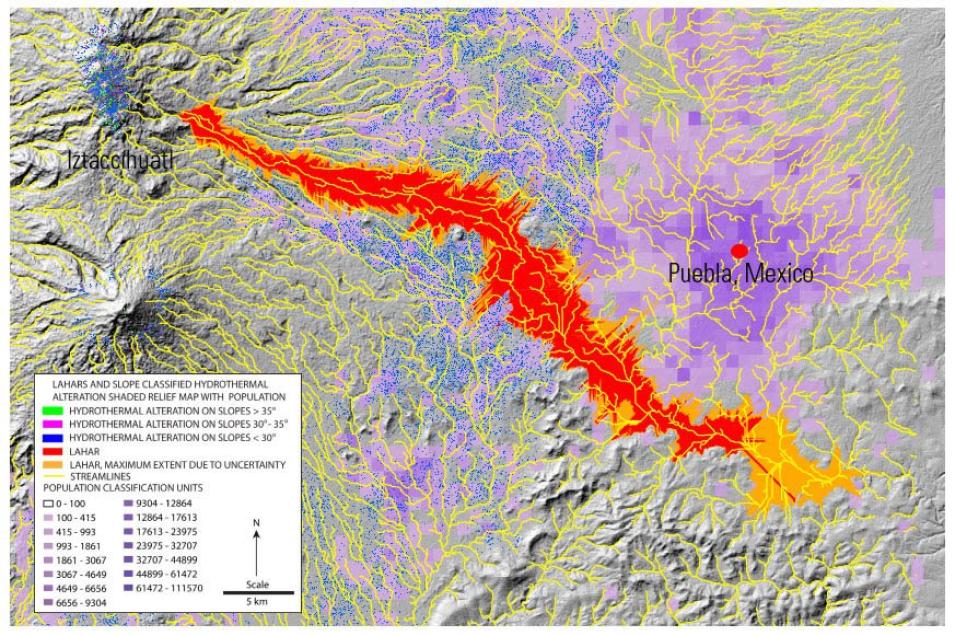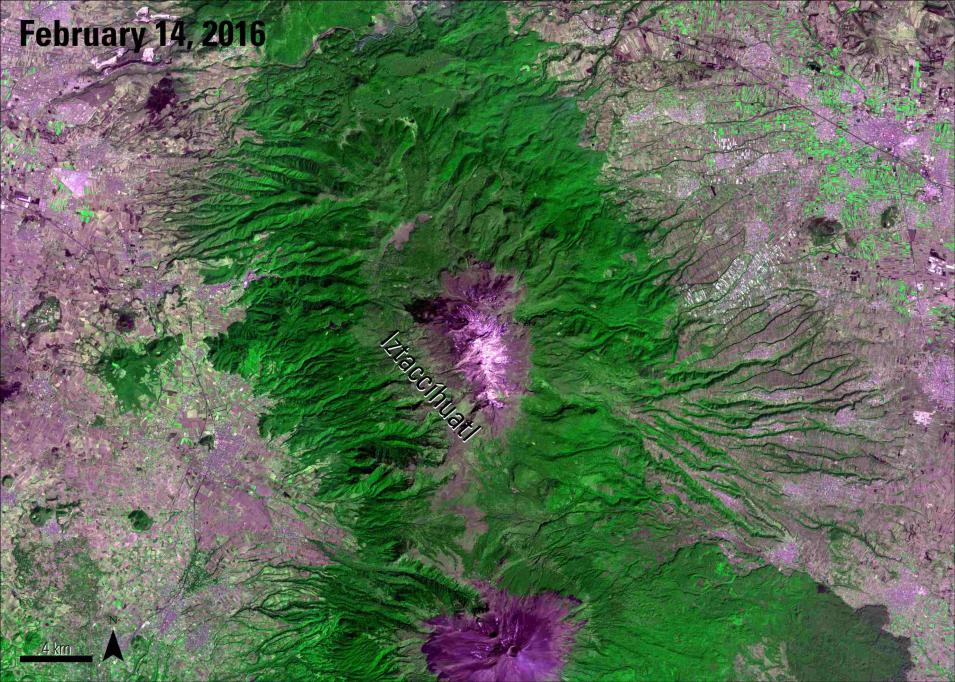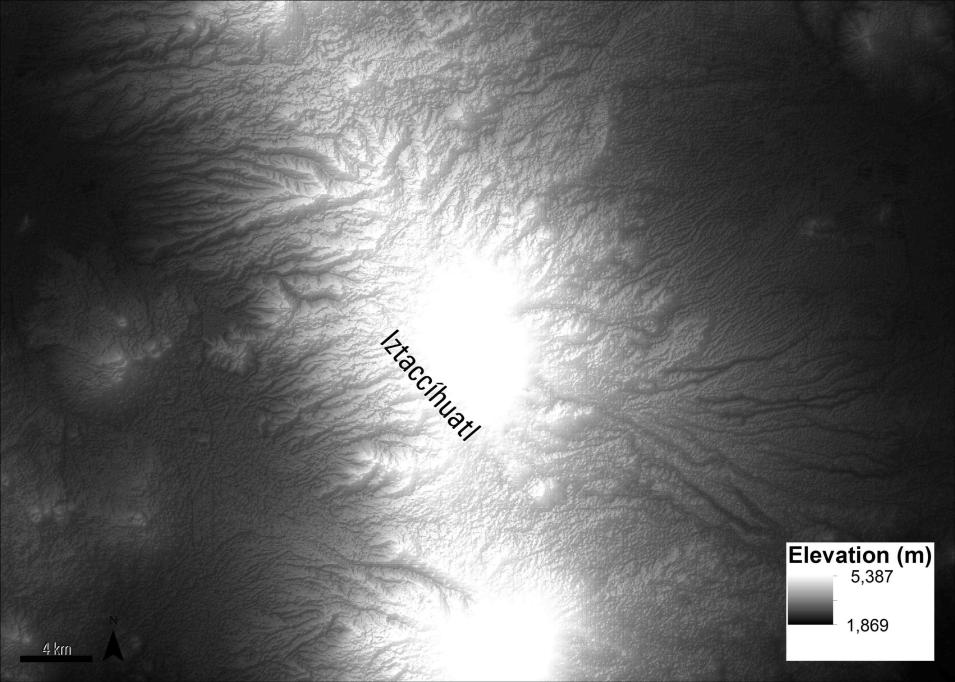Introduction
Millions of people around the world live in areas vulnerable to volcanic eruptions and lahars. Similar to a mudslide, a lahar is a dangerous wet mixture of volcanic debris and water that flows down the sides of a volcano. Although lahars are sometimes unpredictable, the possibility of a lahar can increase if a volcano contains large volumes of weakened hydrothermally altered rock. Hydrothermal alteration is the process where magma-heated, hot, acidic water partially dissolves and alters volcanic rock and sediment in the volcano. Some hydrothermally altered volcanoes can be identified by mapping the cone’s mineral composition. These minerals can be observed by using different band ratios with the Terra platform’s Advanced Spaceborne Thermal Emission and Reflection Radiometer (ASTER) data products. Using ASTER data, researchers are gaining a better understanding of hydrothermal alteration and its potential impact on volcanoes and lahars. Researchers are also using ASTER data to build the first global database of hydrothermally altered volcanoes and to create potential lahar inundation maps for monitored and unmonitored volcanoes in populated areas.


